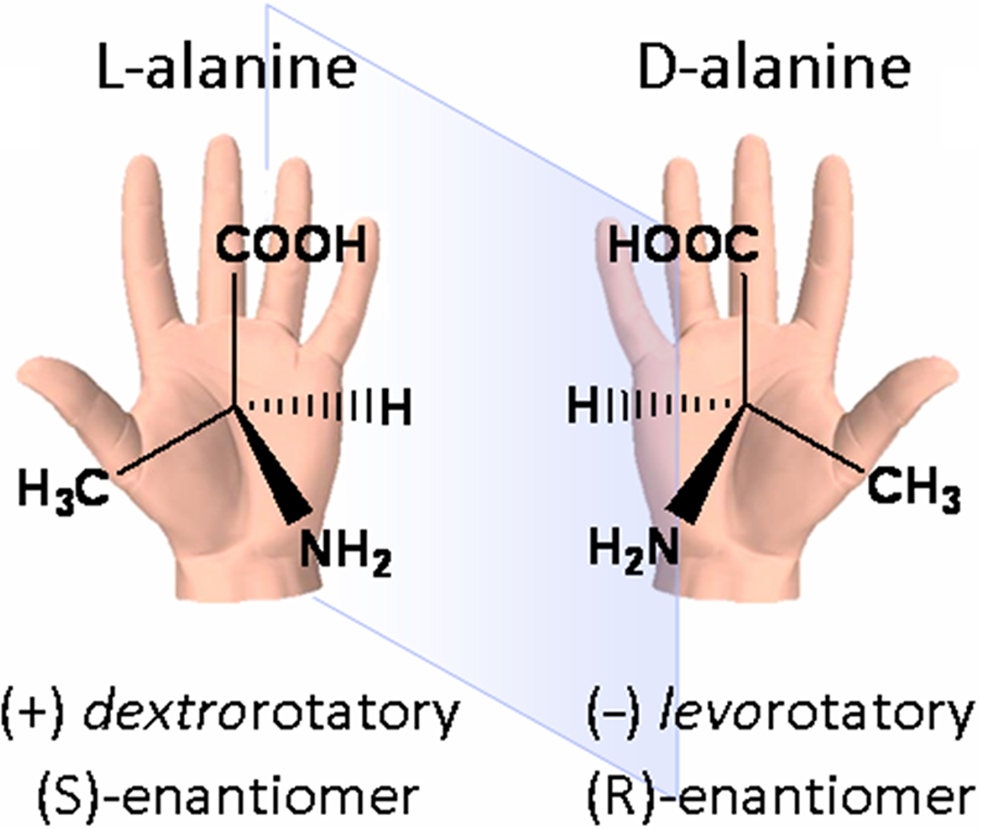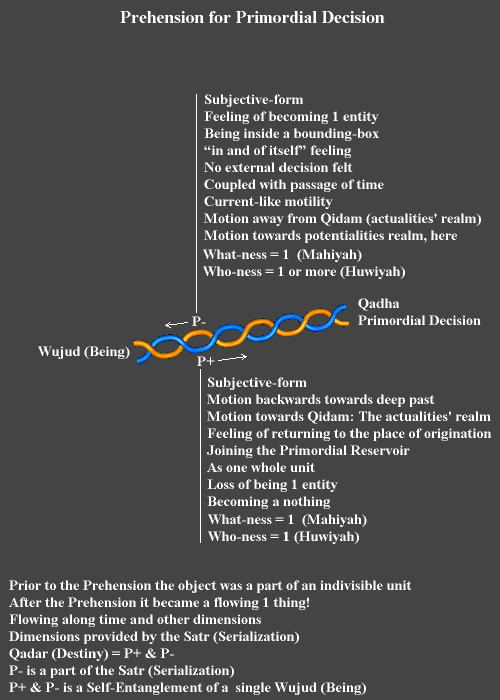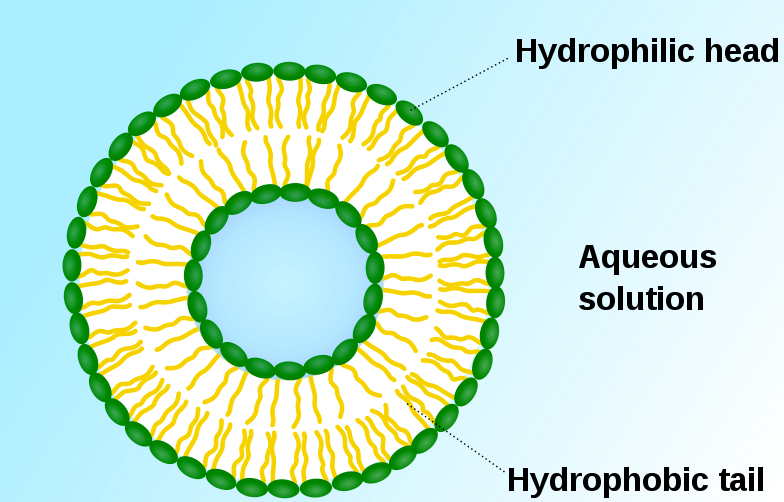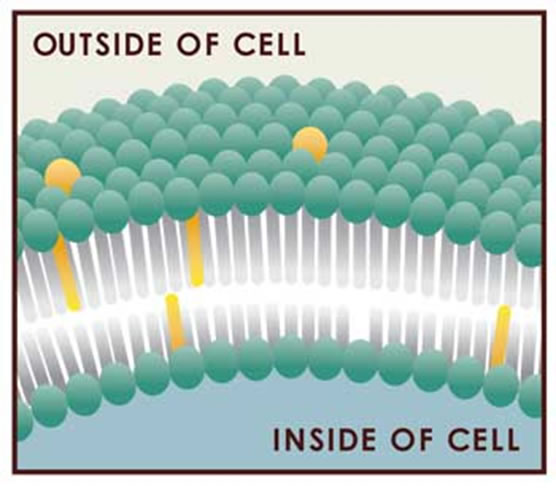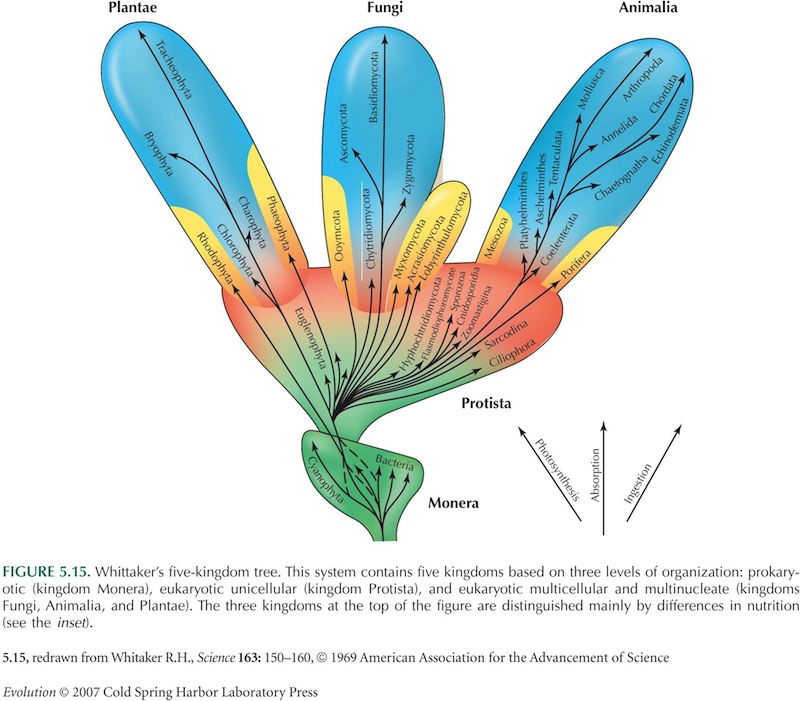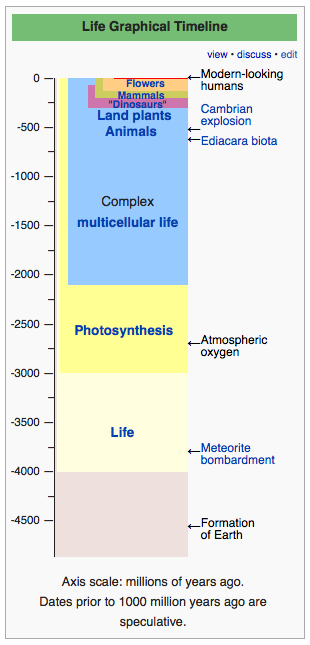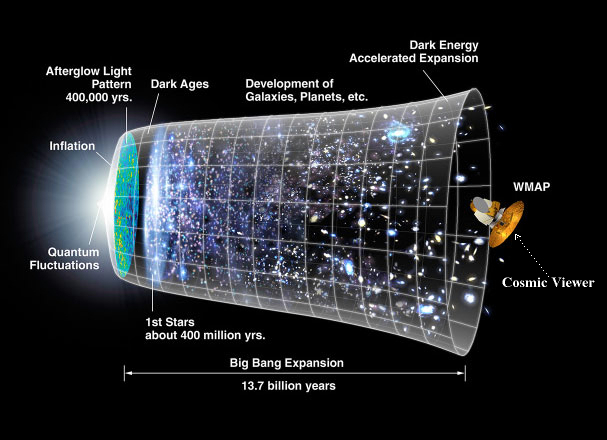
Geometrization of Tauhid (Divine Oneness)
Source: http://www.untiredwithloving.org/crystal_cosmic_viewer1.html
Discussion Join
Persian Text .pdf
Must Read:
http://www.untiredwithloving.org/jabarut_malakut_mulk.html
http://www.untiredwithloving.org/ism_name.html
http://www.untiredwithloving.org/contrast.html
http://www.untiredwithloving.org/qabiliyat.html
http://www.untiredwithloving.org/two_arcs.html
http://en.wikipedia.org/wiki/Cosmic_microwave_background_radiation
Apercu
Space, with its many spatial attributes, is the entity we use the most, feel the most and yet we are conscious of the least!
The medical professionals who have treated the brain injured patients have often reported extraordinary loss of geometric capabilities, often due to a tiny brain lesion or degeneration.
Such perplexing ailments make us wonder: is there a true human being without the space and its geometrical attributes? Can the space be completely removed from the human being? Is space an inseparable part of the being a human?
Every second of our lives, and even in our deepest dreams, we are immersed in some fantastic space. There is no thought within the human intellect and there is no faculty of human mind that is free from spatial attributes or does not use the space and its many variant manifestations.
Human languages and abstractions are riddled and commixed with spatial attributes e.g. ‘within my heart’ or ‘memories are all around’ or ‘rising above the situation’ and so on.
This treatise stakes a single claim:
‘Space and all its spatial attributes indeed are varied manifestations of a Singleton Divine Presence.’
‘Divine Presence’ is the partial geometrization of Tauhid (Divine Oneness), and without the said geometrization nothing of the Tauhid (Divine Oneness) can be ‘felt’ ‘sensed’ or ‘thought of’ by the human being. Without this geometrization of Tauhid (Divine Oneness) there can be no human being!
Uncontrollably and inescapably Mankind erects complex and intricate geometrical edifices as a continuation of the human presence i.e. ‘I was here’ or ‘I shall be here forever though long dead’. As if he is trying to find eternality by means of geometrical and spatial constructions.
In this treatise a sample rendition of the geometrization of Tauhid (Divine Oneness) is presented, as the first attempt to understand both the Tauhid (Divine Oneness) as well as the perpetual emergence of the Divine Presence for human faculties and senses.
Risāl-eh Jām-eh Jahān Namā (Crystal Cosmic Viewer)
By Shams Maghribi
Translator’s Note
Wahdat (Verbal Divine Oneness) is the form of Tauhid that includes deeds and actions or it is the very ‘verb’ of the Divine Oneness (In this context Verbal does not mean spoken, refers to the verb). Wāhidiyat (Intellectual Divine Oneness) is the form of Divine Oneness that is subject to the cognizance of the minds and intellects and the constructs/instrumentations of this world e.g. intellectual descriptions/formulations such as ‘Allah is one’. On the other hand Ahadiyat (Extreme Divine Oneness) is when there is nothing other than Allah, no intellects no hearts and there is no creation of numbers or anything else, an extreme form of Divine Presence.
Lisanul Arab (Ibn Manzur Afriqi)
The difference between the Ahad and Wahid is this: Ahad is a negation i.e. no other one found while Wahid is in its essence (Dhat) one beyond any similarities or copies; Ahad is one but only in meaning i.e. intellectually since no concept of numbers or ‘similarities’ or ‘copies’ applies to it. Wahid cannot be decomposed and cannot be made dual and cannot be sliced and partitioned. [3]
Note: Ahad can be used interchangeably for Shai’ (Object) or vice-a-versa e.g. 60:11 And if any Shai’ (One) of your wives deserts you to the Unbelievers.
لسان العرب ابن منظور
والتوحيد: الإِيمان بالله وحده لا شريك له. والله الواحِدُ الأَحَدُ: ذو الوحدانية والتوحُّدِ. ابن سيده: والله الأَوحدُ والمُتَوَحِّدُ وذُو الوحْدانية، ومن صفاته الواحد الأَحد؛ قال أَبو منصور وغيره: الفرق بينهما أَن الأَحد بني لنفي ما يذكر معه من العدد، تقول ما جاءَني أَحد، والواحد اسم بني لِمُفْتَتَح العدد، تقول جاءني واحد من الناس، ولا تقول جاءني أَحد؛ فالواحد منفرد بالذات في عدم المثل والنظير، والأَحد منفرد بالمعنى؛ وقيل: الواحد هو الذي لا يتجزأُ ولا يثنى ولا يقبل الانقسام ولا نظير له ولا مثل ولا يجمع هذين الوصفين إِلا الله عز وجل؛ وقال ابن الأَثير: في أَسماء الله تعالى الواحد، قال: هو الفرد الذي لم يزل وحده ولم يكن معه آخر؛ قال الأَزهري: وأَما اسم الله عز وجل أَحد فإِنه لا يوصف شيء بالأَحدية غيره؛ لا يقال: رجل أَحَد ولا درهم أَحَد كما يقال رجل وحَدٌ أَي فرد لأَن أَحداً صفة من صفات الله عز وجل التي استخلصها لنفسه ولا يشركه فيها شيء؛ وليس كقولك الله واحد وهذا شيء واحد؛ ولا يقال شيء أَحد وإِن كان بعض اللغويين قال: إِن الأَصل في الأَحَد وحَد؛
قال: أَقام أَحداً مقام ما أَو شيءٍ وليس أَحد من الإِنس ولا من الجن، ولا يتكَلَّمُ بأَحَد إِلا في قولك ما رأَيت أَحداً، قال ذلك أَو تكلم بذلك من الجن والإِنس والملائكة. وإِن كان النفي في غيرهم قلت: ما رأَيت شيئاً يَعْدِلُ هذا وما رأَيت ما يعدل هذا، ثم العَربُ تدخل شيئاً على أَحد وأَحداً على شيء. قال الله تعالى: وإِن فاتكم شيء من أَزواجكم وقرأَ ابن مسعود: وإن فاتكم أَحد من أَزواجكم؛
Jām-eh Jahān Namā: The Batin (Inmost Concealed Core) of the Insan Kamil (Perfected Eye), Riyadhul Arifin p. 40. Jam is a cup or goblet normally made from bronze. It could also be a large piece of crystal (Farhang-eh Mu’in). Crystal connotation of the Jam is chosen in this treatise to match the prism concepts of the Ism (Name) and the optical nature of Ta’ayyun (Contrast). Sajjadi: Jam is a goblet that is used for drinking an exotic drink i.e. Ma’refa (Divine Gnosis) gulped by the Salik (Voyager). The perfected Arif (Divine Cognoscente) drinks Tauhid (Divine Oneness) from this Jam (Goblet). Jahan-Nama or Ghiti-Nama, Jahan/Ghiti is cosmos and Nama is viewer/projector, are Jam that allows the drinker to view the universe as is i.e. the absolute Haqiqat (Reality, Truth) of Tauhid (Divine Oneness). Dara: when a drunkard consumes the intoxicants sees what is not there and when the Salik (Voyager) drinks from this goblet sees what is REALLY there! And sees not what his/her Nafs (Self) fabricated or simulated as ambiguities and falsehoods.
Zahir/Zuhur: Emergence of an abstraction that continues to stay the same e.g. an apple is made up of unnumbered many atoms and particles and field-forces and so on in constant vibration and exchange. But the abstraction of an apple in our minds and eyes and language is a continual abstraction that is observable via the senses. This continual form of appearance of something that comes into existence is called Zuhur or Emergent Abstraction.
Maghribi’s own introduction
In The Name of Allah The Rahman The Rahim; and there is no shield or power except by Allah—Al-‘Aliyu Al-‘Azimu—Hamd (Adoration) beyond bounds and unnumbered Shukr (Gratitude) deserving the Dhat (Divine Essence) that ITs infinite uniqueness (Wahdat) is the genesis the Ahadiyat (Extreme Divine Oneness) and Wahidiyat (Verbal Divine Oneness), the order and organization of the Azaliat (Sempiternity) and Abadiyat (Eternity), the connection between the Zahiriyat (Abstract Emergence) and Batiniyat (Concealed Internality), the middle-agent between the Awwaliyat (Primordality) and Akhiriyat (Endmost Last-ness). All gaping chasms are Isharat (Pointing) at Hu (IT, He), the ubiquitous Barzakh (Barrier) is all about Hu, and Haqiqat-Muhammadi (Praiseworthy Reality) is Khud (Divine Self) for Hu. [1]
And limitless praise in perpetual close proximity to the Hadhrat (Divine Presence) that by means of Ta’ayyun-Awwal (Primordial Contrast) and Tajalli-Awwal (Primordial Lucent Manifestation) which guaranteed the self-awareness/consciousness, (in addition to) the Kamal (Perfection) of Dhat (Essence) and Asma’ (The Society of All Names)—Tafsilan (Via Divisible and Detailed processes)—and by means of the second-Tajalli (Lucent Manifestation) an aspect of the Wahidiyat (Verbal Divine Oneness), did the Ta’yyin (Assignment of meanings and semantics) for the rank of ‘Uluhiyat (Deified Beloved-ness) that includes the Zahir (Abstract Emergence) of the Wujud (Being) which is an infinitely particularized Wujub (Imminent, Must-Be) characterization of Hu (IT, Him) while also includes the Zahir (Abstract Emergence) of ‘Ilm (Divine Knowledge); since Imkan (Potentialities, Probabilities) is one of ITs Lawazim (Flowing Contrasting Attributes) and includes the reality of the human being as the Barzakh (Barrier) between the Wujub (Imminent Actuality) and Imkan (Potentiality, Probability).
Ever-sprouting adoration and praise for the Chieftain (Muhammad) that the realities, spirits and corporealities are the Tafsil (Detailedness) of the realities of his spirit and his corporeality, truly the benefactor for all spirits and corporealities Ijmalan (Quantally, without divisibility and detailedness); peace and blessing be upon his family and his children, the household that carried the throne of his Shariat (Divine Law, Prophetic Mannerism), the engravers of his primary and secondary engravings (as in engravings on a seal to sing+seal letters/edicts), may Allah be pleased with all of them collectively.
A group of friends who are the seekers of the knowledge of Tauhid (Divine Oneness) and love to Tahqiq (Research) and love to Tajrid (Forsake this world), and yet could not understand the language of this Nation (Sufis) and could not understand their books, thus begged this Faqir (Pauper) to write a Risalah (Treatise) that would include a comprehensive knowledge for Tauhid (Divine Oneness) and organization of Wujud (Being), and they asked me to use the geometry of a circle for each level/layer/organization of the Wujud and Tauhid thus utilize the shapes of what can be observed to open the gates of the meanings and concepts. I did accept their request and after praying the Istikhara (Special Prayer for making decisions), composed a treatise which I called Jām-eh Jahān Namā (Crystal Cosmic Viewer). I hope for That Nonpareil Divine Presence to guard this short write-up from mistakes and oversights. It is the case that IT is able to do anything and ITs response most befitting and worthy.
This treatise comprises of two (related or concentric) circles each with a line going through the center halving the circle into two arcs and the said line is the Barzakh (Barrier partitioning):
1. Circle 1: Ahadiyat (Extreme Divine Oneness) as one arc and the Wahidiyat (Intellectual Divine Oneness) as the second arc. And Wahdat (Verbal Divine Oneness) is what relates/links/entangles Wujud (Being-ness) to ‘Ilm (Divine Knowledge) to Nur (Divine Light) to Shuhud (Observation) to Tajalli (Lucent Manifestation) to Ta’ayyun-Awwal (Primordial Ocular Contrast).
2. Circle 2: Dealing with the Zahir (Emergence) of the Wujud (Being) which is the Wujub (Imminent, Inevitable Actuality) of infinitely particularized Nafs (Divine Self) of Hu (IT, He) and the Zahir (Emergence) of the ‘Ilm (Divine Knowledge) that is probable and potential due to the Lawazim (Flowing Contrasting Attributes) of Hu (IT, Him). And the secondary Barzakh (Barrier) that is the reality of humanity i.e. human being is the barrier separating the Wujub (Imminent Actuality free of potentialities) from all probabilities and potentialities. And this circle also deals with the secondary Tajalli (Lucent Manifestation)
Circle 1
May Allah aid you with a spirit from ITself, (in this circle) still the laws of the Zuhur (Emergence) within the Butun (Innermost Cores) fully enclosed and the laws of Wahidiyat (Intellectual Divine Oneness) within the Ahadiyat (Extreme Divine Oneness) fully enclosed, and both inescapably inserted within the authoritative power of Wahdat (Verbal Divine Oneness). And even the identifications such as ‘Ainiyat (Having Essence) or Ghayriat (Other-than-ness) or Ism (Having Name) or Rasm (Having design) or Ni’at (Having characterizations) or Wasf (Having descriptions) or Zuhur (Having Abstraction) or Butun (Having inmost core) or Kathrat (Multitude) or numerical 1-ness or Wujub (Actuality) or Imkan (Potentiality) are all exiled within the Ahadiyat (Extreme Divine Oneness). Moreover Zahiriyat (Emergence) and Batiniyat (Concealed internality) or even Awwaliyat (Primordiality) and Akhiriyat (Endmost-ness) are all concealed as well (without a trace).
Within the impenetrable solitude of Ghayb (Unobservable Unseen), Allah as a Shāhid (Observing Witness) willed a Huwiya (Who-ness, That-ness, IT-ness) and thus manifested ITself to ITself: Manifested with the Divine Attribute of Wahdat (Verbal Oneness) and thus the first primordial Ta’ayyun (Ocular Contrast) i.e. contrast between being absent and being present, caused the Huwiya (Who-ness, That-ness) to emerge (i.e. Hu).
And the latter is a form of Wahdat (Verbal Oneness) which is the origin of all Qābiliyat (Receptivity) and for IT emergence or concealment is the same since Hu (IT) is the Qabil (Receptive) to both what is emerged and what is concealed. Wahdat (Verbal Oneness) is the Muzhir (Place of emergence or manifestation) for both Ahadiyat (Extreme Oneness) and Wahidiyat (Intellectual Oneness) since both Ahadiyat and Wahidiyat are relative and have no (standalone) emergence except by means of some inter-linkage (Entanglement) between them and that linkage is Wahdat (Verbal Oneness).
Therefore both Ahadiyat (Extreme Divine Oneness) and Wahidiyat (Intellectual Oneness) are results of and generated from the Wahdat (Verbal Divine Oneness). (Dara: He means without Wahdat, both Ahadiyat and Wahidiyat would have no emergence, though they exist; their emergence or their appearance within this universe and within hearts and intellects is the active actions of the Wahdat as a Verbal Divine Oneness) [2]
As love (the verb of loving) is the inter-linkage between lover-ness and beloved-ness. (Dara: Without the active actions of the verb love no heart or intellect can grasp the concepts of a lover or a beloved, similar to the fact that without the active verb of tasting the taste of honey is beyond the reach of any explanation or description!)
Therefore this Wahdat (Verbal Divine Oneness) is the very essence of the Ahadiyat (Extreme Divine Oneness) and Wahidiyat (Intellectual Divine Oneness) as the knower the known and the knowledge are the same within the Dhat (Divine Essence) i.e. with regards to Allah’s essence the very concepts of knower and the known and knowledge are all but One and indistinguishable . (Dara: Only the very verb of knowing actions the discernment-entanglement between the knower and the known. You need to discern between the existence and emergence, the knower the knowing and the known are all in existence as one but they EMERGE as separate entities for our intellects if and only if the verb to know issues its actions in our universe.Ya Azizam…)
Therefore consider the Wahdat (Verbal Divine Oneness) in a similar fashion: it is the very linkage between Ahadiyat (Extreme Divine Presence) (a modality) wherein there is no other creation not even numbers and Wahidiyat (Intellectual Divine Oneness) where the intellects can cognize ITs Oneness by worldly constructs e.g. numbers. To make all this mentally clear the geometry of a circle with a halving line has been rendered.
Dara: In this biological form and in this transient universe we comprehend objects as the mapping between two spaces, we have no ability to understand a single entity in and of itself away and free from all else! Our intellect requires a stratum or the background-space upon which entities reside and the mapping between the stratum and these entities forms cognition within our minds and hearts. The said two arcs reside upon the stratum of the halving line and all linkage and communications takes place vis-à-vis this halving line.
The design of the first circle is comprised of Ahadiyat (Extreme Oneness), Wahdat (Verbal Oneness) and Wahidiyat (Intellectual Oneness) and this circle is halved by the line passing through the center and each half is called Qaus (Arc) i.e. one Ahadiyat Qaus (Arc) and the other Wahidiyat Qaus (Arc). The cutting line forming a Barzakh (Barrier) between the two Qaus (Arc) is called Qaba-Qausain (Measure of two arcs) which is the bearer of the Tajalli-Awwal (First Primordial Manifestation) that is coined as Haqiqat-Muhammadi (Praiseworthy Reality)—May Allah’s peace and blessing be upon Muhammad.
The Qaus (Arc) of Wahidiyat is sliced into four parts:
1. Wujud (Being-ness)
2. ‘Ilm (Divine Knowledge)
3. Nur (Divine Light)
4. Shuhud (Divine Observation)
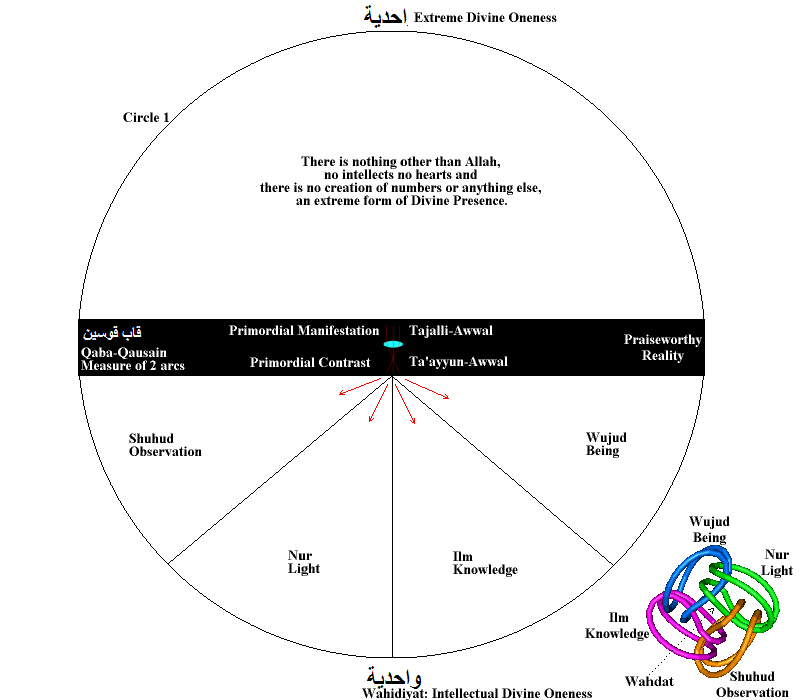
And these four subdivisions were the direct consequence of the Ta’ayyun-Awwal (First Primordial Ocular Contrast) i.e. Allah made Tajalli (Lucent Manifestation) to ITself and thus ‘found’ ITs Divine Self, and the Divine Self became a Hudhur (Presence) in and of ITself free of all cognitive faculties, Istitar (Veiling), free from not being found/addressed and absences! This ‘finding’ (of ITself), being available to be found and being subject to observations is the Kathrat (Multitude-ness, More-than-one-ness) and as such appears within the Qaus (Arc) of Wahidiyat (Intellectual Oneness). Although these Kathrat (Multitudes) are only found in one half of the circle, indeed it is in full relations to the other arc i.e. Ahadiyat (Extreme Oneness), since these attributes are not separable from each other, indeed they are the ‘Ain (Essences) of each other. (Dara: They are each other’s Ain i.e. Allah allowed us to be able to see and feel a CONTRAST (Ta’ayyun) between these attributes of the Divine Oneness, just like the camera lens that focuses and establishes discernable contrast between different spots on a scene, it is one scene but allows for countless focus-defocus i.e. contrasts. Or Ain to mean a spring i.e. from the spring of More-than-one-ness gushes the Ahadiyat and from the spring of Ahadiyat pours out the More-than-one-ness.)
Moreover know that this Tajalli-Awwal (Primordial Lucent Manifestation) requires Kamal-Dhati (Perfection of Inmost Essence) and Kamal-Asma’i (Perfection of all Ism) and at that this perfection is Ijmali (Quantal). Since this perfection is absolutely forbidden through the Tafsili (Divisible and Detailed) processes i.e. the discernment of realities of Tauhid (Divine Oneness) due to the overpowering power of the Wahdat (Verbal Oneness) are ‘treasures’ within That Hadhrat (Divine Presence). (Dara: Right now I am looking at my discernable fingers typing on discernable individual keys and looking at partitioned pixels of this screen, all these partitioned entities are treasures found only by the closeness to the Divine Presence, since no power no entity and no process or mechanism can ever eke out a single discernable partitioned being out of the Ahadiyat! When something becomes infinitely perfect then it cannot be in the proximity of other non-perfect beings and it cannot show any sub-part and slight alternation or observation of its internals causes it to cease and for that matter the infinitely perfect beings are quantal.)
(Dara: [2:30] ‘Inni (I) Jā’ilun (am placing continually, as a doer) within the earth a deputy; ‘Inni (I) is the result of the Tajalli-Awwal (Primordial Lucent Manifestation) and Ta’ayyun-Awwal (Primordial Contrast), while the Ja’ilun i.e. being the doer that places the man upon the earth, is the emerging result of the second Tajalli and second Ta’ayyun.
Tabari
Jā’ilun is the Fā’ilun or the perpetual doer.
Mawardi
Jā’ilun has two meanings
1. The creator
2. A way of doing an action based upon the constraints of an attribute, in this case placing the man upon the earth, again and again, one going and the other appearing.
)
تفسير جامع البيان في تفسير القرآن/ الطبري (ت 310 هـ)
حدثنا القاسم بن الـحسن، قال: حدثنا الـحسين، قال: حدثنـي حجاج، عن جرير بن حازم، ومبـارك عن الـحسن، وأبـي بكر، يعنـي الهذلـي عن الـحسن وقتادة، قالوا: قال الله للـملائكة: { إنـي جاعِلٌ فـي الأرْضِ خَـلِـيفَةً } قال لهم: إنـي فـاعل
تفسير النكت والعيون/ الماوردي (ت 450 هـ)
وقوله تعالى: { إِنِّي جَاعِلٌ في الأَرْضِ خَلِيفَةً } اختلف في معنى { جاعل } على وجهين:
أحدهما: أنه بمعنى خالق.
والثاني: بمعنى جاعل، لأن حقيقة الجَعْل فِعْلُ الشيء على صفةٍ، وحقيقة الإحداث إيجاد الشيء بعد العدم.
The absolute Ghina (Divine Affluence) requires the Kamal-Dhati (Perfection of the inmost Essence) and the meaning of Fana-Mutlaq (Absolute Evanescence) is: That no matter how much this Fana seeks Tafsil (Partition from itself e.g. partitioning away from the human Self), from Awwal (Primordialty, Beginning-less-ness) to Abad (Eternality, endless-ness) the evanescing entity is observing Hu (IT, Him), an indivisible observation, and then the entity due to this form of indivisible observation is completely needless of Tafsil (Divisibility, Partitioning). (Dara: My best understand of this argument is that human being and for that matter any other being in the voyage towards Allah, seeking to partition from his/her own Self to arrive at infinitely close proximity of the Divine Presence, voyages from the divisible continuum of this corporeal existence to a Quantal nature which requires no divisibility and partitioning any longer and that is coined as Fana-Mutlaq.)
(To complete the above arguments) Here the needed concept is that of the perfection of Ism (Names, Identifiers) and this perfection is conditional Tafsilan (Divisibly via Partitioning) upon this world (Cosmos) and hinges upon Adam (Fist Primordial Man) Ijmalan (Quantally). (Dara: Adam or the first primordial human is the very spring from which poured out all the Quantum aspects of matter and living organisms and the space-time!Probably he was not initially in the biological form of a male or was much more than a regular man today. Unfortunately the Western thought sees this in reverse that human beings are subsequent after-thought of the universe and the fundamental quantum mechanical laws originated from the matter/energy/space-time, with human being yet another ensemble of atoms occupying the space-time. Think Different: Quantum Mechanics is the direct consequence of appearance of Adam into this realm. Moreover without the emergence of Adam there was no way for the all the Ism (Names, Identifiers) to reach perfection in both quantal and divisible spaces.)
Hus (ITs) Tajalli (Lucent Manifestation) for ITself is the requirement for all else to have Dhat (Essence), (inmost essences) reachable vis-à-vis the Ism (Names) and Sifat (Attributes). Divine Manifestation for ITself was/is both Mujmal (Quantal) and Mufassal (Divisible and with highly discernable details). And the latter i.e. the Mufassal-Tajalli (Divisible and Detailed Manifestation) indeed needs another form of Kamal (Perfection) all together! Since Wijdan (Self-Consciousness and sentience) and Hudhur (Having Presence) and ‘Ilm (Knowledge) and Nur (Light) are all quantal parts of the Dhat (Divine Essence) and there is no way to obtain them individually Mufassalan (In a divisible and highly detailed form) except by means of the laws of Ghayriyat (Other-than-ness) since within the Hudhur (Divine Presence) anything other than Allah is not allowable. (Dara: Allah has ordained the laws of Other-than-ness so that we are able to access the knowledge and presence and self-awareness in quantal as well as divisible and detailed manner. Had these laws of Other-than-ness not been ordained we would have been non-cognitive and non-sentient and self-unaware and unloving living organisms.)
Therefore the needed form of Kamal (Perfection) is based upon yet another Ta’yyun (Contrast) and another Tajalli (Lucent Manifestation), which are exhaled (Nafas) from the respiratory-Batin (Deep inmost core) of the source of Tajalli, emerged (Zuhur) and via this Inba’ath (Out-flowing emanation) all the Divine, Cosmic and human realities became discernable from each other. And all these (realities) in need of Tafsil (Divisibility and detailed-ness) appeared in an orderly organization (i.e. like flows of a liquid/gas) within the second Ta’ayyun (Contrast) and Tajalli (Lucent Manifestation).
And this Nafas (Exhalation) is like unto a thin cloud occluding the blazing sun or veiling the Sun of Ahadiyat (Extreme Divine Oneness) just a tiny bit. And the latter is based upon a question that was asked of the Prophet: Where was our Lord before created the creation? And the Prophet replied: Within a cloud above it no air and below it no air. His reply is Isharat (Pointing) at what was said earlier; however the Prophet mentioned that there was no air below the said cloud to make sure they understood that his words are not rendering a physical cloud and air!
سنن ابن ماجه. – للإمام ابن ماجه
الجزء الأول >> [افتتاح الكتاب في: الإيمان، وفضائل الصحابة، والعلم] >> (13) باب فيما أَنكرت الجهِيَمة
182 – حَدَّثنَا أَبُو بَكْرِ بْنُ أَبِي شَيْبَةَ، ومُحَمَّد بْنُ الصباح. قَالَا: حَدَّثنَا يزيد بْنُ هارون. أَنْبَأَنَا حماد بْنُ سلمة، عَنْ يعَلِيّ بْنُ عطاء، عَنْ وَكِيْع بْنُ حدس، عَنْ عمه أَبِي رزين؛ قَالَ:
قلت: يا رَسُول اللَّه! أَين كَانَ ربنا قبل أَن يخلق خلقه؟ قَالَ (كَانَ فِي عماء، مَا تحته هُوَاء، وما فوقه هُوَاء، وما ثُمَّ خاق، عرشه عَلَى الماء).
[ش (عماء) العماء السحاب. قَالَ كثير من العلماء: هَذَا من حديث الصفات، فتؤمن بِهِ وبكل علمه إِلَى عاله. (ما تحته الماء) “مَا” نافية، لاَ موصولة. وكذا قوله وما فوق. (مَا ثُمَّ خلق) “ثُمَّ” اسم إشارة إِلَى المكان. و”خلق” بمعنى مخلوق].
(This manifestation-level is called the Ta’yyun-Thani (Second Contrast) and Tajalli-Thani (Second Lucent Manifestation) or the rank of ‘Uluhiyat (Deified Beloved-ness) or Ism-Allah (The Name Allah) or Falak-Hayat (The Orbit of Life). And since this is the second level of the Wujud (Being-ness) and since Ba (‘b’ sound in Arabic) is the second member of the alphabet, this second level of contrast and manifestations is also called Harf (Divine Alphabet) Ba.)
Note: Falak-Hayat might be Fulk-Hayat meaning the vessel of life.
Circle 2
Circle 2 renders the Zahir (Emergence) of the Wujud (Being-ness) which is indeed the infinitely particularized Wujub (Imminent Actuality) characterization of Hu (IT, Him), and the other half of the circle is the Zahir (Emergence) of the ‘Ilm (Divine Knowledge) which is potentially available due to ITs Lawazim (Flowing Contrasting Attributes) and the Insaniyat (Humanity) is the Barzakh (Barrier) that partitions these two halves of the circle.
Each arc has 28 Ism (Name, Identifier) … Dara: The picture corresponding to this half of the treatise is illegible and I need to look for an alternative publishing of this treatise or make up a similar write-up, either way INSHALLAH it will be in near future.
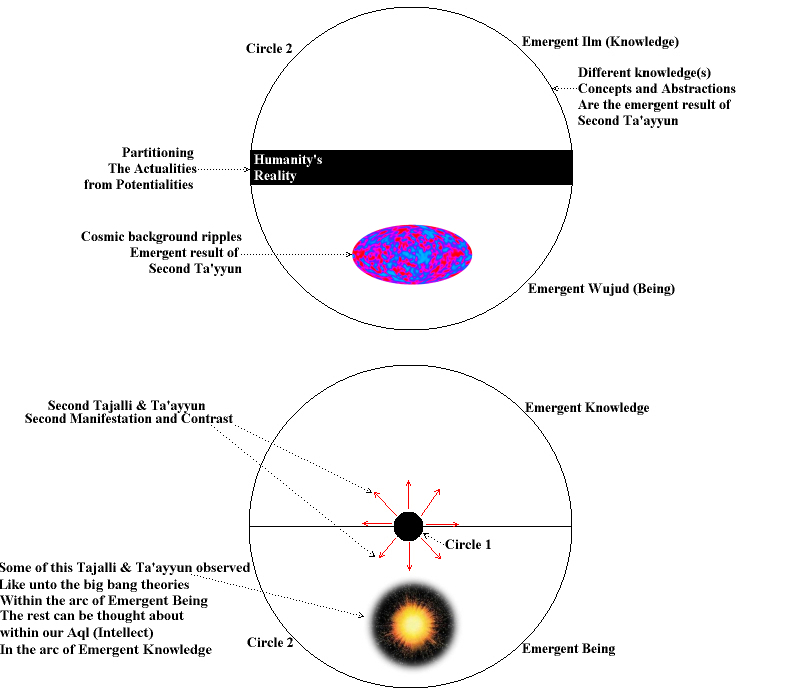
[1] Sheikh wrote: Haqiqat Muhammadi Khud ūst and I kept the term Khud or Self, since his style of writing is so laconic and dense that there is no way he just placed a redundant word in there.
[2] ‘Found ITself’ could have several meanings:
1. Allowed for a Divine Nafs (Self) e.g. ‘wrote over Hus (ITs, His) Nafs (Self) Mercy’.
2. Made this Divine Nafs (Self) searchable i.e. people can look for Allah and find Allah talk about Allah as a third person.
3. “Allowed for” or “Made this Divine Self…” could also be understood as Allah providing a form of focus and contrast, where the human being is able to focus and increase the contrast on the Divine Self, reduce the contrast on all else and as such without breaking indivisibility of the Divine Presence perceive aspects that are normally available only as a single unit.
[3] Wahda-Hu when used in the professing of the Tauhid is in the state of Rafu’ i.e. it is above the application of any actions or verbs. Ibn Manzur tells us that Wahd-Hu is always in the state of Nasb except when it is used for the said professing of the Tauhid. Arab grammarians gave this state of Nasb three explanations:
1. Wahda-Hu expresses a Hala or state or being in a state of being somehow
2. Wahda-Hu expresses a Masdar (Verbal Noun), a noun that renders the non-transient nature of a verb/action.
3. Wahda-Hu is a Zarf (Adverbial) rendering the how-ness of a verb or the attributes of a verb
All three throw Wahda-Hu into the state of Nasb i.e. the word is under the action of a verb.
However when used to profess the Oneness of Allah, Wahda-Hu is in the state of Raf’ i.e. it is above all actions of verbs and bounds of states.
Zarf: A word used to modify the sense of a verb, adverbial.
لسان العرب ابن منظور
قال أَبو بكر: وحده منصوب في جميع كلام العرب إِلا في ثلاثة مواضع، تقول: لا إِله إِلا الله وحده لا شريك له، ومررت بزيد وحده؛ وبالقوم وحدي. قال: وفي نصب وحده ثلاثة أَقوال: قال جماعة من البصريين هو منصوب على الحال، وقال يونس: وحده هو بمنزلة عنده، وقال هشام: وحده منصوب على المصدر، وحكى وَحَدَ يَحِدُ صَدَر وَحْدَه على هذا الفعل.
قال: والعرب تنصب وحده في الكلام كله لا ترفعه ولا تخفضه إِلا في ثلاثة أَحرف: نسيج وحده، وعُيَيْر وحده، وجُحَيْش وحده؛ قال: وقال البصريون إِنما نصبوا وحده على مذهب المصدر أَي تَوَحَّد وحدَه؛ قال: وقال أَصحابنا إِنما النصْبُ على مذهب الصفة؛ قال أَبو عبيد: وقد يدخل الأَمران فيه جميعاً؛ وقال شمر: أَما نسيج وحده فمدح وأَما جحيش وحده وعيير وحده فموضوعان موضع الذمّ، وهما اللذان لا يُشاوِرانِ أَحداً ولا يُخالِطانِ، وفيهما مع ذلك مَهانةٌ وضَعْفٌ؛ وقال غيره: معنى قوله نسيج وحده أَنه لا ثاني له وأَصله الثوب الذي لا يُسْدى على سَداه لِرِقّة غيره من الثياب. ابن الأَعرابي: يقال نسيجُ وحده وعيير وحده ورجلُ وحده. ابن السكيت: تقول هذا رجل لا واحد له كما تقول هو نسيج وحده. وفي حديث عمر: من يَدُلُّني على نسيج وحده? الجوهري: الوَحْدةُ الانفراد. يقال: رأَيته وحده وجلس وحده أَي منفرداً، وهو منصوب عند أَهل الكوفة على الظرف، وعند أَهل البصرة على المصدر في كل حال، كأَنك قلت أَوحدته برؤْيتي إِيحاداً أَي لم أَرَ غيره ثم وضَعْت وحده هذا الموضع. قال أَبو العباس: ويحتمل وجهاً آخر، وهو أَن يكون الرجل بنفسه منفرداً كأَنك قلت رأَيت رجلاً منفرداً انفراداً ثم وضعت وحده موضعه، قال: ولا يضاف إِلا في ثلاثة مواضع: هو نسيج وحده، وهو مدح، وعيير وحده وجحيش وحده، وهما ذم، كأَنك قلت نسيج إِفراد فلما وضعت وحده موضع مصدر مجرور جررته، وربما قالوا: رجيل وحده. قال ابن بري عند قول الجوهري رأَيته وحده منصوب على الظرف عند أَهل الكوفة وعند أَهل البصرة على المصدر؛ قال: أَما أَهل البصرة فينصبونه على الحال، وهو عندهم اسم واقع موقع المصدر المنتصب على الحال مثل جاء زيد رَكْضاً أَي راكضاً. قال: ومن البصريين من ينصبه على الظرف، قال: وهو مذهب يونس. قال: وليس ذلك مختصاً بالكوفيين كما زعم الجوهري. قال: وهذا الفصل له باب في كتب النحويين مُسْتَوْفىً فيه بيان ذلك.
©2008-2002, Dara O Shayda
